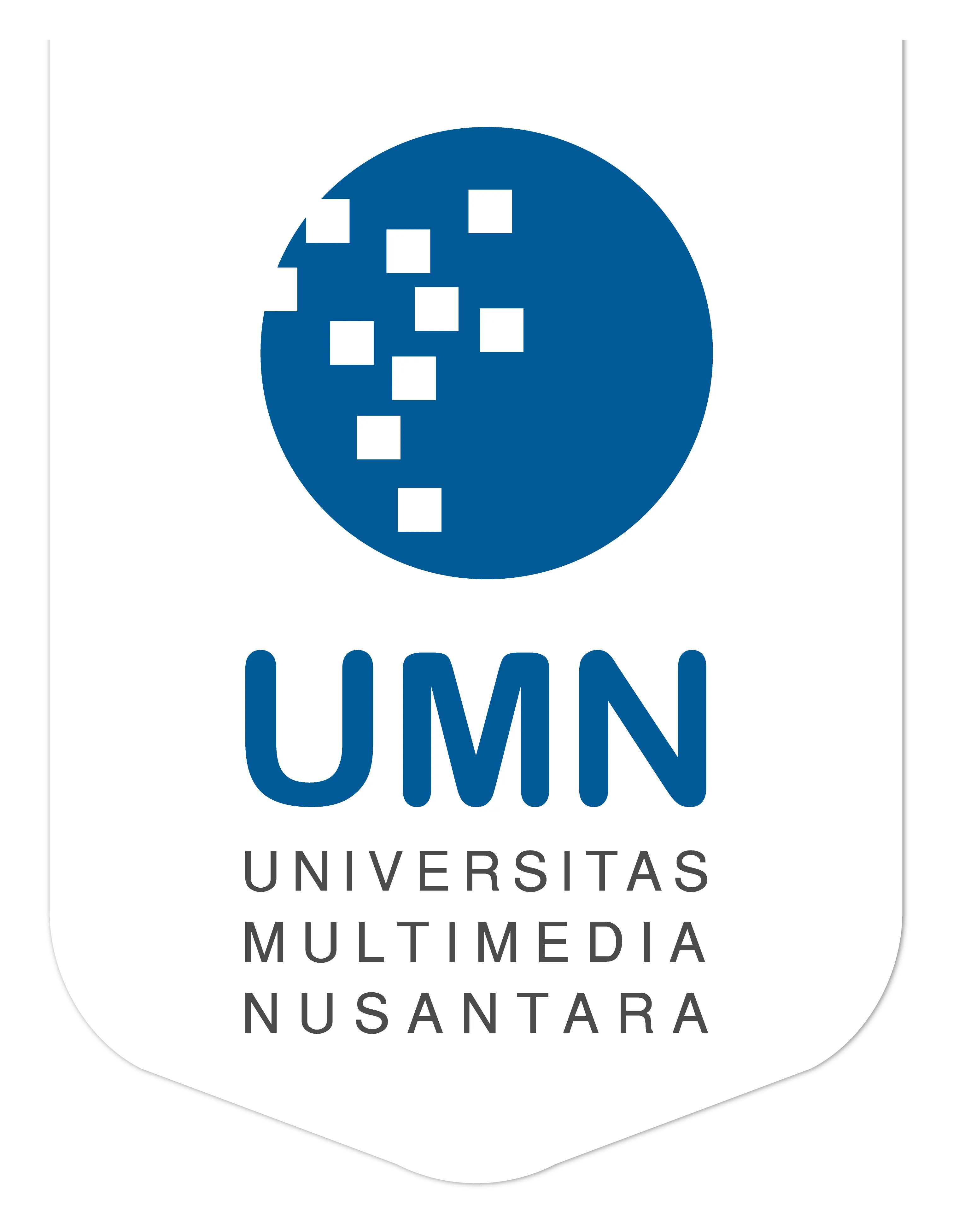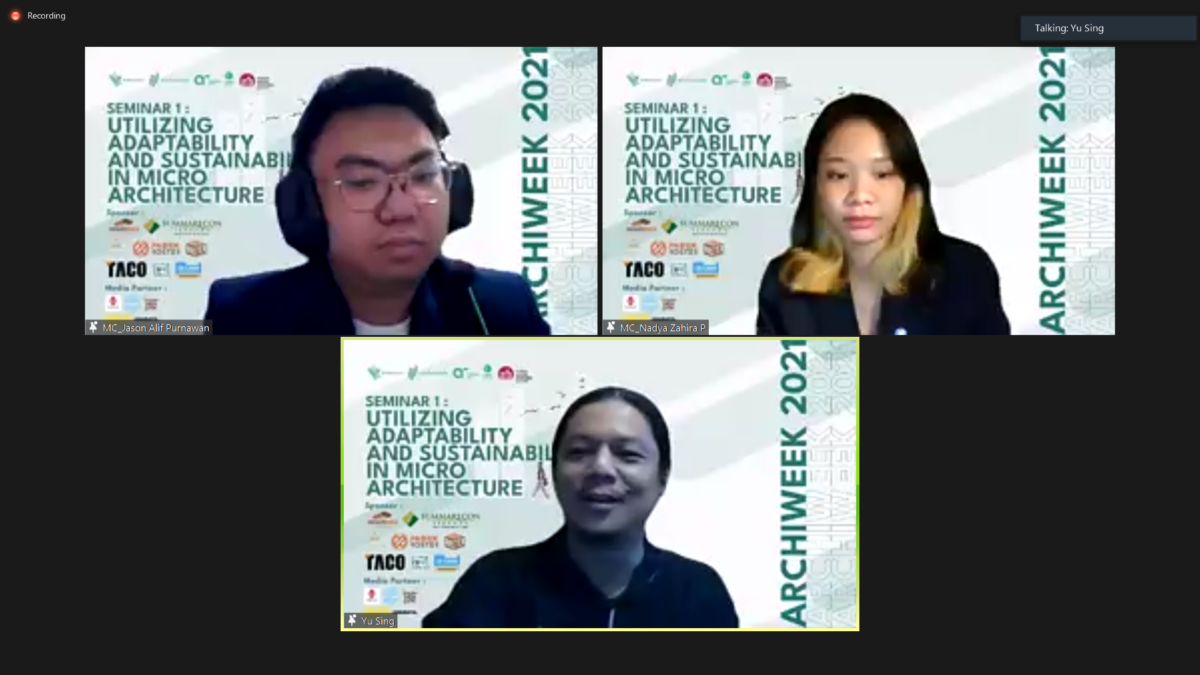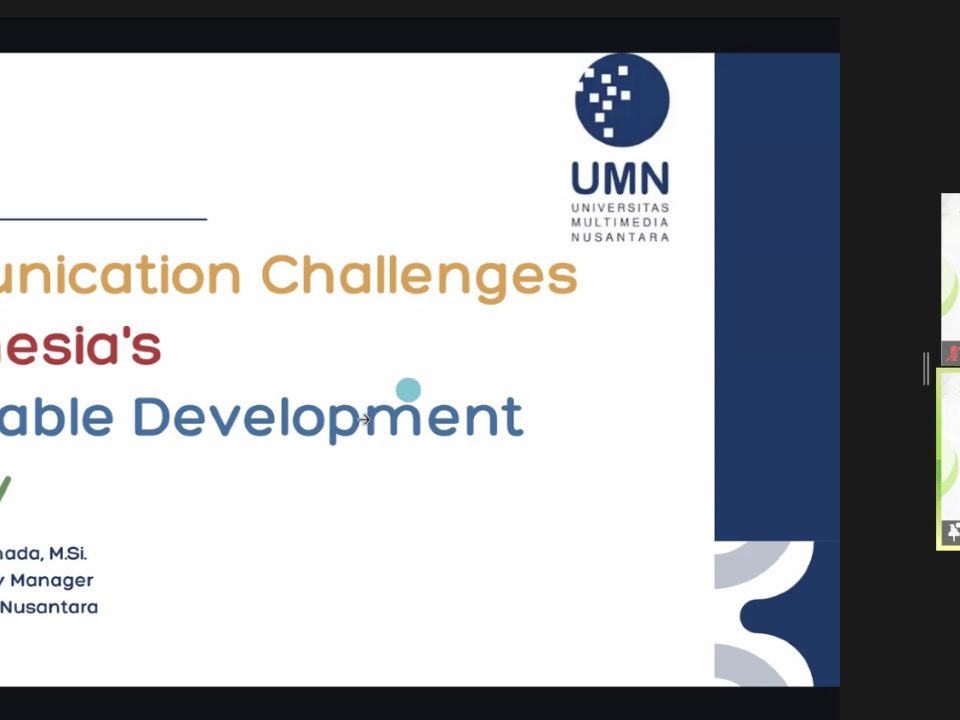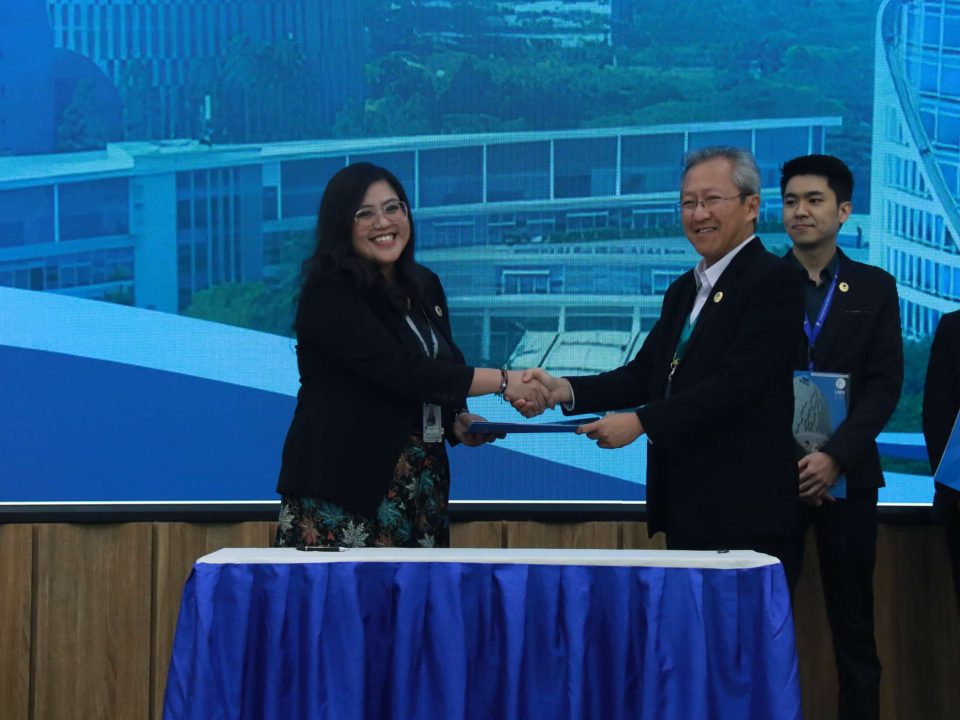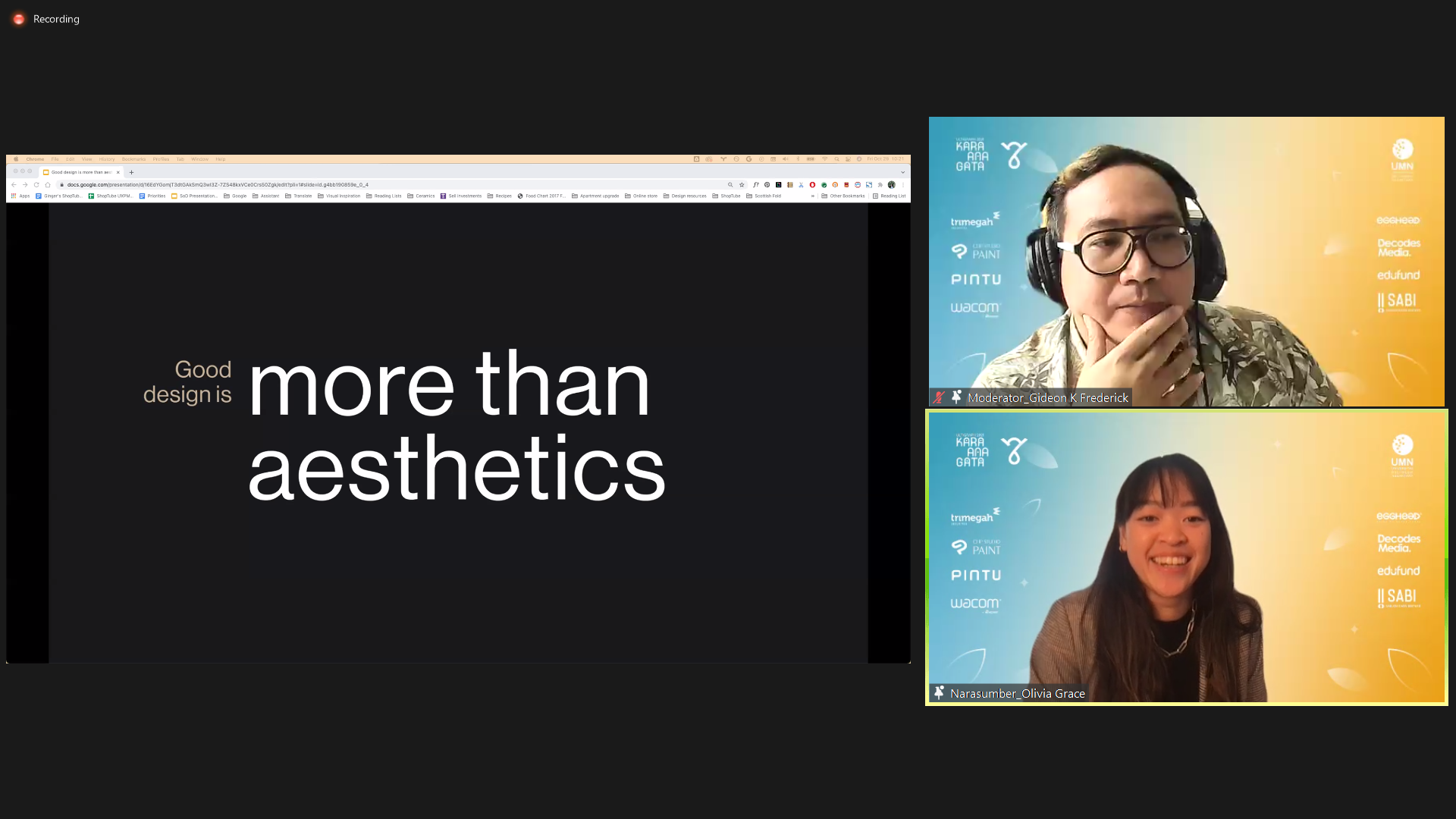
UMN Ultigraph Seminar 2021: Good Design is More Than Aesthetics
October 29, 2021
Kontribusi Pajak: Cara Mudah Menjadi Pahlawan Negeri
November 1, 2021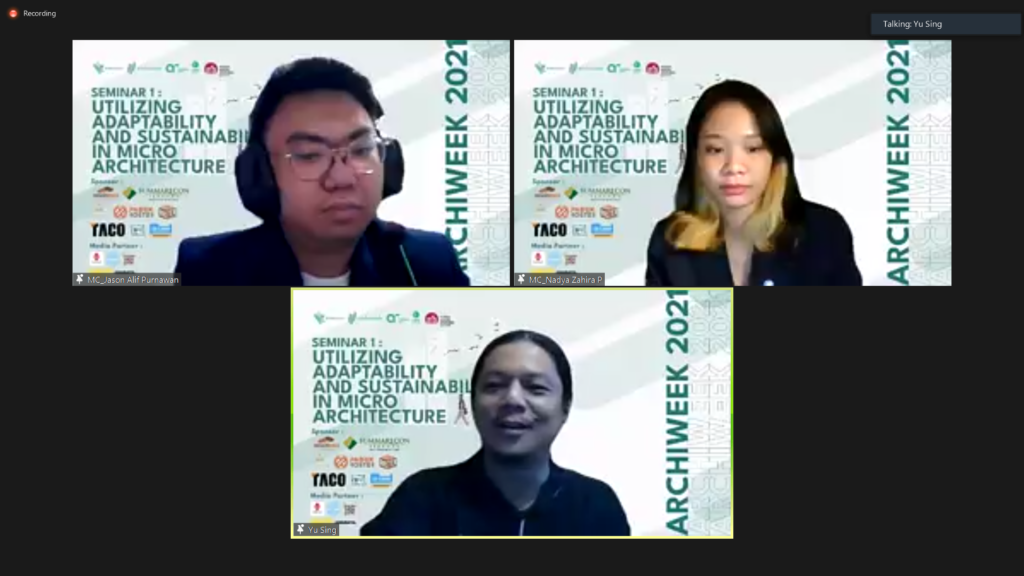
Guide and speaker at the Archiweek UMN 2021 seminar “Utilizing Adaptability and Sustainability in Micro Architecture” (doc. UMN)
TANGERANG – The lack of green space is one of the issues faced in various densely populated cities. In this regard, microarchitecture can be an example of innovation to overcome this problem. The UMN Architecture Study Program also through “Archiweek UMN 2021” held a seminar entitled “Utilizing Adaptability and Sustainability in Micro Architecture” online on Friday (29/10/21). This seminar invited Yu Sing as the architect of Studio Akanoma who has experience in the field of microarchitecture.
On the occasion of this seminar, Yu Sing shared his experience in making various projects related to microarchitecture. Microarchitecture is an architectural solution that can save land, costs, and energy for the lives of its residents. In addition, Yu Sing also said that there are many benefits of this microarchitecture, such as reducing pollution, congestion, and increasing income.
“They not only function the house as a place of rest, but also a place to earn a living or be productive. We can also lift this so that our income can be increased,” said Yu Sing.
However, this microarchitecture does invite many pros and cons. This is mainly related to the convenience offered by the microarchitecture. In response, Yu Sing said it all depends on each individual’s choice. However, he also emphasizes the cochlear analogy. He says don’t think of the house as a cage. According to him, we can live in a house as small as possible like a snail because living space is not only limited in the house.
Also read UMN Architecture Students Share Tips On Visualizing Diagrams
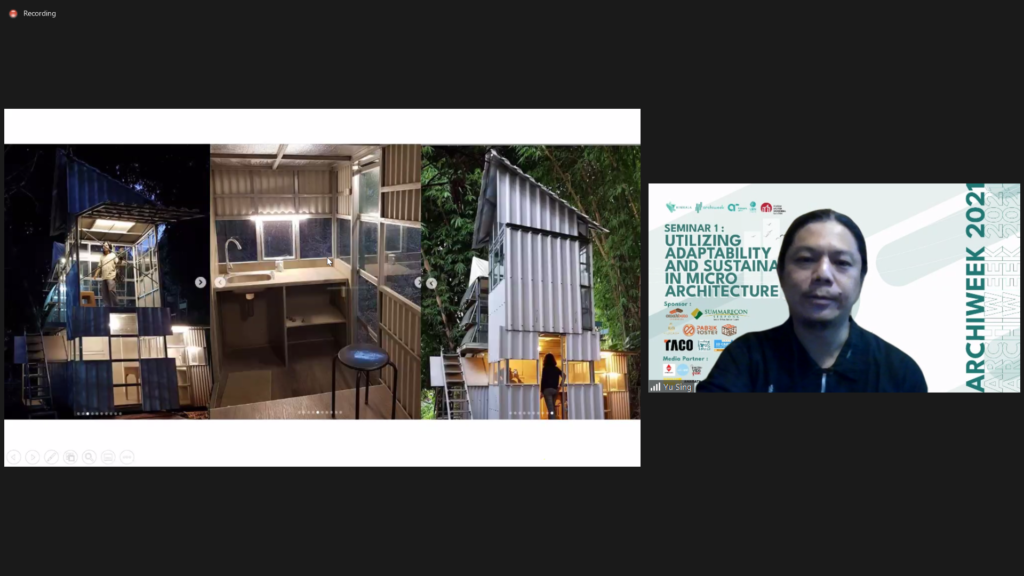
An example of a microarchitecture project undertaken by Yu Sing and his team (doc. UMN)
“For the comfort of the room it is not a big room, but having an attractive view, wind, good lighting, good ventilation, and trees that are present around the house also help us psychologically build a more comfortable and relaxed feeling,” explained Yu Sing.
Furthermore, Yu Sing also said that there are several challenges from the realization of this microarchitecture. One of them is the issue of budget. This is because the client has a very limited budget, despite already implementing a microarchitecture. In addition, there is also no desire to adapt to try microarchitecture.
“Many have limited budget needs. So, even micro is not enough. Or also do not want to adapt to what is. This means that if we propose a capsule room, they don’t want it. So, it’s a matter of courage to try to adapt,” said Yu Sing.
By Melinda Chang | UMN News Service
Kuliah di Jakarta untuk jurusan program studi Informatika| Sistem Informasi | Teknik Komputer | Teknik Elektro | Teknik Fisika | Akuntansi | Manajemen| Komunikasi Strategis | Jurnalistik | Desain Komunikasi Visual | Film dan Animasi | Arsitektur | D3 Perhotelan | International Program, di Universitas Multimedia Nusantara. www.umn.ac.id
